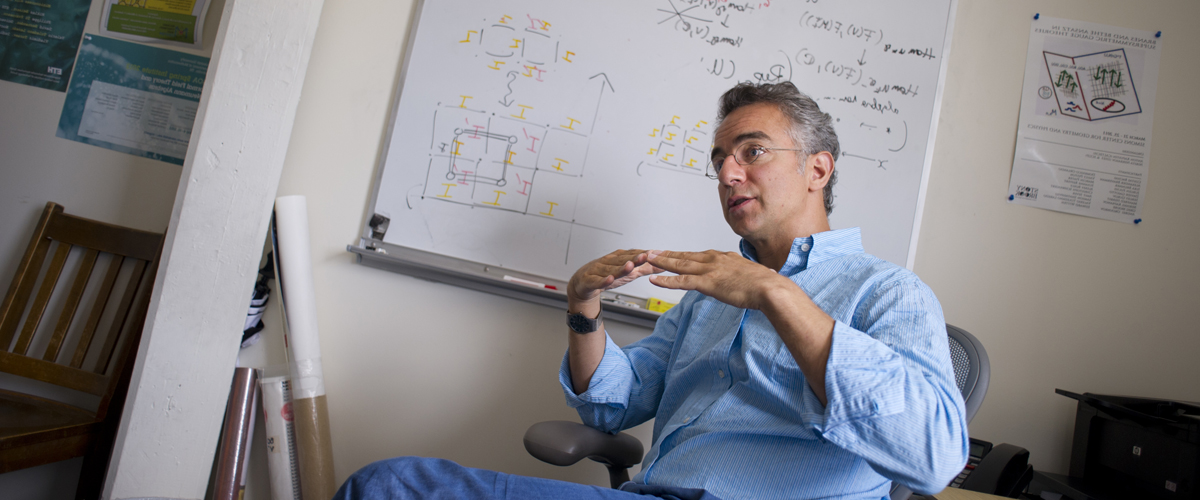by Angela Herring of news@Northeastern
More than a decade ago, mathematics professor Valerio Toledano Laredo was puzzling over the relationship between the symmetries of macroscopic and microscopic systems when he discovered a brand new set of differential equations. Toledano Laredo named them the Casimir equations in honor of the physicist Hendrick Casimir, who, in the 1930s, discovered a key ingredient in their construction.
Toledano Laredo recently received a grant from the National Science Foundation to continue exploring the Casimir equations’ unexpected properties. Since their discovery, the equations have been turning up in the farthest corners of mathematics — from representation theory (the mathematical study of symmetry), to analysis (the field of calculus) and algebraic geometry.
They are also relevant to both string theory, which seeks to unify Einstein’s theory of general relativity with quantum physics, and statistical mechanics, which explores large assemblies of small particles such as molecules in a gas or photons in a laser beam.
The Casimir equations also govern a phenomenon in algebraic geometry known as wall-crossing, wherein slight variations in the equations governing the shape of a curve or a surface cause it to dramatically morph—like a bubble popping off the surface of the bathwater and drifting away.
Toledano Laredo said he and his students have gradually begun to understand these multifaceted equations better. Building on work from a previous NSF collaborative grant with researchers at Brown, Columbia and MIT, Toledano Laredo will explore in particular a property that he discovered in conjunction with Columbia University assistant professor Sachin Gautam, who graduated from Northeastern in 2011 under Toledano Laredo.
“The equations seem to exist in more and more sophisticated guises that are arranged like the rungs of a ladder,” said Toledano Laredo.
One component of the new project will involve studying the equations on the higher rungs. A second component of the project is a spin-off from the first and has taken on a life of its own. As Toledano Laredo put it, “It is concerned with exactly understanding the relation between the rungs.”
Surprisingly, the less sophisticated equations—those on the lower rungs—seem to contain all the tools necessary to understand the more sophisticated ones, he explained. “People know very well how to go up the ladder and think that what’s below is actually simpler,” he said. But as he and Gautam have shown, this is not actually the case. The new grant will allow Toledano Laredo to probe that fact in greater depth.

